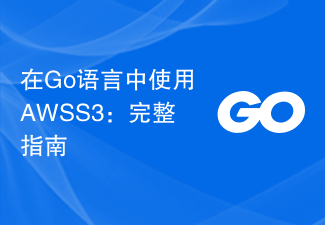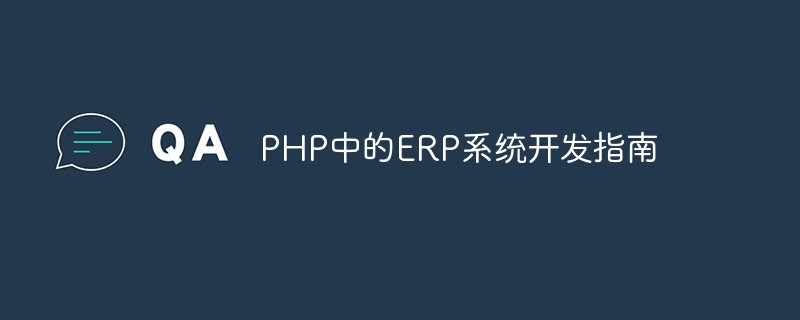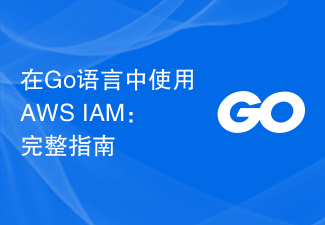With the popularity of Web applications, the Beego framework has gradually become a popular choice in the field of Web development. Beego is an open source web framework based on Golang language. It supports high concurrency, lightweight, rapid development and other advantages. It provides RESTful API, MVC, automatic document generation and other functions, and is widely loved by developers. If you are trying to use the Beego framework to develop web applications, this article will provide you with some guidelines and suggestions.
1. Install Beego
Before you start using the Beego framework for web development, you need to install Beego first. First, you need to install Golang. After the installation is completed, you can install Beego through the following command:
go get github.com/astaxie/beego
After the installation is completed, you can run the following command to check whether Beego is installed successfully:
beego version
If the Beego framework has been installed successfully , the version number of the framework will be output.
2. Create Beego application
After successful installation, you can start creating Beego application. Creating an application using Beego is very simple, just run the following command:
bee new [项目名]
After executing this command, Beego will automatically create an application containing the default configuration file and routing configuration file. After that, you can find your application in the BeeGo directory and run the following command to start the application:
bee run
After successfully starting the application, you can enter http://localhost:8080 in the browser View the application.
3. Configure Beego application
By default, Beego will use App.conf as the application configuration file. You need to configure it in this file to suit your needs. This file contains a series of configuration options that you can configure according to the actual situation.
The following are some commonly used configuration options:
- AppName: The name of the application
- HttpPort: The listening port of the application
- RunMode: The running mode of the application, which can be dev, prod or test
- SessionOn: Whether to enable Session processing
- TemplateLeft: Template left separator
- TemplateRight: Template right separator
- StaticDir: Static file directory
- CopyRequestBody: Whether to copy the body of the HTTP request
4. Configure routing
In Beego, routing management is Very important part. You can keep your code clean by grouping route points, and you can also distribute routes to different controllers for better organization and management.
The following is a simple routing configuration:
beego.Router("/", &controllers.MainController{})
beego.Router("/login", &controllers.LoginController{})
beego.Router("/logout", &controllers.LogoutController{})The above code will parse the root route, login and logout routes respectively, and assign each route to a different controller for execution to achieve the best results. Excellent management effect.
5. Development of Controller
In Beego, the controller is responsible for processing HTTP requests and responses. You can use the controller to process the data in the HTTP request and return the corresponding data or page according to the request.
Creating a new controller is very simple, just add a new .go file under the "controllers" directory in the application directory.
The following is a simple controller:
package controllers
import (
"github.com/astaxie/beego"
)
type MainController struct {
beego.Controller
}
func (this *MainController) Get() {
this.Ctx.WriteString("Hello World!")
}The above code creates a controller named MainController and responds with a "Hello World!" string in the Get method.
6. Using ORM
Beego framework provides an ORM library that allows you to easily handle the database. Before using the ORM, you need to create a database and then configure the corresponding database information in the application.
The following is a simple ORM example:
package models
import (
"github.com/astaxie/beego/orm"
_ "github.com/go-sql-driver/mysql"
)
type User struct {
Id int `pk:"auto"`
Name string `orm:"size(100)"`
Age int
Address string `orm:"null"`
Tel string `orm:"null"`
}
func init() {
orm.RegisterDriver("mysql", orm.DRMySQL)
orm.RegisterDataBase("default", "mysql", "root:123456@/test?charset=utf8")
orm.RegisterModel(new(User))
orm.RunSyncdb("default", false, true)
}In the above example, we created an ORM model named "User" and registered the MySQL database driver in the init function program. Then, we use the RegisterDataBase function to connect to the database, the RegisterModel function registers the User model, and the RunSyncdb function to synchronize the model to the database.
7. Automatic document generation
The Beego framework supports automatic generation of API documents through the swagger plug-in, making developers' work easier.
To use the swagger plug-in, you need to install the swagger tool. After installing the swagger tool, just add the following code to the application:
import (
"github.com/astaxie/beego"
"github.com/astaxie/beego/plugins/swagger"
)
func main() {
beego.InsertFilter("*", beego.BeforeRouter, swagger.Swagger())
}The above code will register the swagger plug-in in the application to automatically document and test the API.
After creating the API document, just access the document through http://localhost:8080/swagger. This document will show all API interface information.
8. Summary
Beego framework is a web framework with excellent performance and easy to use. It provides many useful features (such as MVC structure, ORM and Swagger plug-ins, etc.) to help developers Build high-quality web applications quickly. If you encounter any problems when using the Beego framework, you can refer to the guidelines and suggestions provided in this article, or check the official documentation. I hope this article can be helpful to you, and I wish you success in developing your web application!
The above is the detailed content of A guide to developing web applications using the Beego framework. For more information, please follow other related articles on the PHP Chinese website!
 在Go语言中使用Elastic Stack:完整指南Jun 17, 2023 am 10:42 AM
在Go语言中使用Elastic Stack:完整指南Jun 17, 2023 am 10:42 AM在Go语言中使用ElasticStack:完整指南ElasticStack是一个开源工具集,它为搜索、分析和可视化大量数据提供了强大的支持。该工具集由四个主要组件组成:Elasticsearch、Logstash、Kibana和Beats。其中,Elasticsearch是一个分布式的搜索和分析引擎,能够快速地执行搜索、分析和聚合操作。Logstash是
 在Go语言中使用AWS SDK:完整指南Jun 17, 2023 am 09:40 AM
在Go语言中使用AWS SDK:完整指南Jun 17, 2023 am 09:40 AMAWS(AmazonWebServices)是一家全球领先的云计算提供商,为企业和个人提供各种云计算服务。随着云计算技术的发展,越来越多的开发者开始使用AWS来进行开发、测试和部署他们的应用程序。Go语言是一门非常流行的编程语言,尤其适合构建高性能和可扩展的云原生应用程序。AWS提供了适用于Go语言的SDK(SoftwareDevelopmentKi
 PHP中的安全审计指南Jun 11, 2023 pm 02:59 PM
PHP中的安全审计指南Jun 11, 2023 pm 02:59 PM随着Web应用程序的日益普及,安全审计也变得越来越重要。PHP是一种广泛使用的编程语言,也是很多Web应用程序的基础。本文将介绍PHP中的安全审计指南,以帮助开发人员编写更加安全的Web应用程序。输入验证输入验证是Web应用程序中最基本的安全特性之一。虽然PHP提供了许多内置函数来对输入进行过滤和验证,但这些函数并不能完全保证输入的安全性。因此,开发人员需要
 在Go语言中使用AWS S3:完整指南Jun 17, 2023 am 08:21 AM
在Go语言中使用AWS S3:完整指南Jun 17, 2023 am 08:21 AM近年来,随着云计算技术的发展,许多企业开始转向使用云存储服务来存储和管理自己的数据。其中,AWSS3(AmazonWebServicesSimpleStorageService)是一种备受欢迎的选择。作为AWS的核心服务之一,S3提供了高可用性、高性能、可扩展和安全的存储服务。在这篇文章中,我们将深入探讨如何在Go语言中使用AWSS3。安装AW
 PHP中的ERP系统开发指南May 21, 2023 am 08:22 AM
PHP中的ERP系统开发指南May 21, 2023 am 08:22 AM随着现代企业的发展,ERP系统的重要性也越来越凸显出来。ERP系统可以帮助企业集成和管理计划、客户关系、供应链、人力资源等方面的数据和业务流程。PHP作为一种流行的编程语言,也可以用于开发ERP系统。在本文中,我们将分享一些PHP中的ERP系统开发指南。确定ERP系统的需求在开始开发ERP系统之前,您需要确定自己的ERP系统所需要的功能。根据你的企业的运营方
![如何使用 wmic 快速列出所有 Windows 进程 [教程]](https://img.php.cn/upload/article/000/887/227/168569000461539.jpg) 如何使用 wmic 快速列出所有 Windows 进程 [教程]Jun 02, 2023 pm 03:13 PM
如何使用 wmic 快速列出所有 Windows 进程 [教程]Jun 02, 2023 pm 03:13 PM当您在处理各种重要项目并且性能是关键字时,必须准确了解后台运行的进程。特别是如果上述一个或多个过程影响您当前的工作,或者您可以只使用额外的果汁。准确地找出您的设备仍在后台运行的内容非常容易。您可以使用wmic工具在几秒钟内获得所需的所有信息。怎么样,你问?我们将在本文中向您展示这一点,因此您可以方便地获得这些信息以供将来参考。如何使用wmic了解后台进程?实际上,您可以在命令提示符窗口中输入许多有用的命令,前提是您以管理员权限打开它,这些命令可以提供宝贵的信息。了解后台进程以及收集系统信息(BI
 PHP中的音频操作指南May 20, 2023 pm 09:42 PM
PHP中的音频操作指南May 20, 2023 pm 09:42 PMPHP作为一种广泛使用的服务器端语言,在许多Web应用程序中扮演着重要的角色。音频处理是一个很常见的需求,例如音乐网站和音频产品销售网站等。在本文中,将为读者介绍如何在PHP中操作音频文件。一、了解音频格式在PHP中操作音频文件前,需要先了解音频文件格式。常见的音频格式有MP3、WAV、OGG、FLAC等。不同的格式有不同的音频编码算法和数据格式。例如,MP
 在Go语言中使用AWS IAM:完整指南Jun 17, 2023 pm 03:39 PM
在Go语言中使用AWS IAM:完整指南Jun 17, 2023 pm 03:39 PMAWS(AmazonWebServices)作为云计算业界的领头羊,提供了方便而强大的云计算服务,使得企业可以轻松地构建和管理自己的IT基础设施,并获得更好的可扩展性、灵活性和低成本。而IAM(IdentityandAccessManagement)是AWS中的重要服务之一,负责管理用户(包括人员、应用、服务等)的身份和访问权限,保障AWS资源的安


Hot AI Tools

Undresser.AI Undress
AI-powered app for creating realistic nude photos

AI Clothes Remover
Online AI tool for removing clothes from photos.

Undress AI Tool
Undress images for free

Clothoff.io
AI clothes remover

AI Hentai Generator
Generate AI Hentai for free.

Hot Article

Hot Tools

SublimeText3 Linux new version
SublimeText3 Linux latest version

Notepad++7.3.1
Easy-to-use and free code editor

Atom editor mac version download
The most popular open source editor

WebStorm Mac version
Useful JavaScript development tools

ZendStudio 13.5.1 Mac
Powerful PHP integrated development environment






